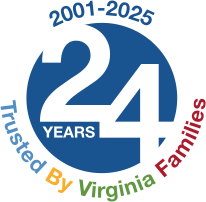In 1988, Congress added design and construction requirements to the Fair Housing Law, requiring "new multi-family housing" be designed and constructed with certain accessible features. "New" means anything built after March 13, 1991. "Multi-family housing" means any project with four or more units and includes condominiums, apartments and single-story townhouses.
Design and Construction Requirements
The seven design and construction requirements are:
- units must have an accessible entrance and must be on an accessible route;
- public and common-use areas must be accessible;
- the doors within units must be usable doors;
- there must be an accessible route into and through the unit;
- light switches, electrical outlets and environmental controls must be accessible;
- bathrooms must have reinforced walls; and
- kitchens and bathrooms must be usable.
In buildings without elevators, only first floor units need to comply. In buildings with elevators, every unit must comply.
Congress added the design and construction requirements to the Fair Housing Law to provide anyone with a mobility-related disability a better chance of finding housing that works more for them than against them. For example, someone who uses a wheelchair or walker will find it easier to enter and exit rooms with 32" doors, versus doors that are only 28 inches wide.
Accessibility investigations conducted by the Virginia Fair Housing Office and housing advocacy organizations indicate a certain degree of non-compliance with the law. Common problems include not making every door intended for user passage wide enough. Every door intended for user passage should be 32" wide, including both doors even if they provide access into the same room. For example, a hallway door going into a master bedroom and a door going into the master bedroom from an attached bathroom, both need to be 32" wide because both doors are intended for user passage.
Another common problem involves bathroom doors swinging into the bathroom and encroaching on the clear floor space. Bathroom doors should swing out or, if they swing in, there needs to be enough space to allow someone--including a person using a wheelchair--to enter the bathroom, close the door, and use the facilities.
One way to satisfy the Fair Housing Law's accessibility requirements is to follow HUD's Fair Housing Accessibility Guidelines. Although the guidelines are not requirements, they do create a "safe harbor" for housing providers to show their attempt to comply with the law.
Additional Resources
HUD Fair Housing Accessibility Guidelines
